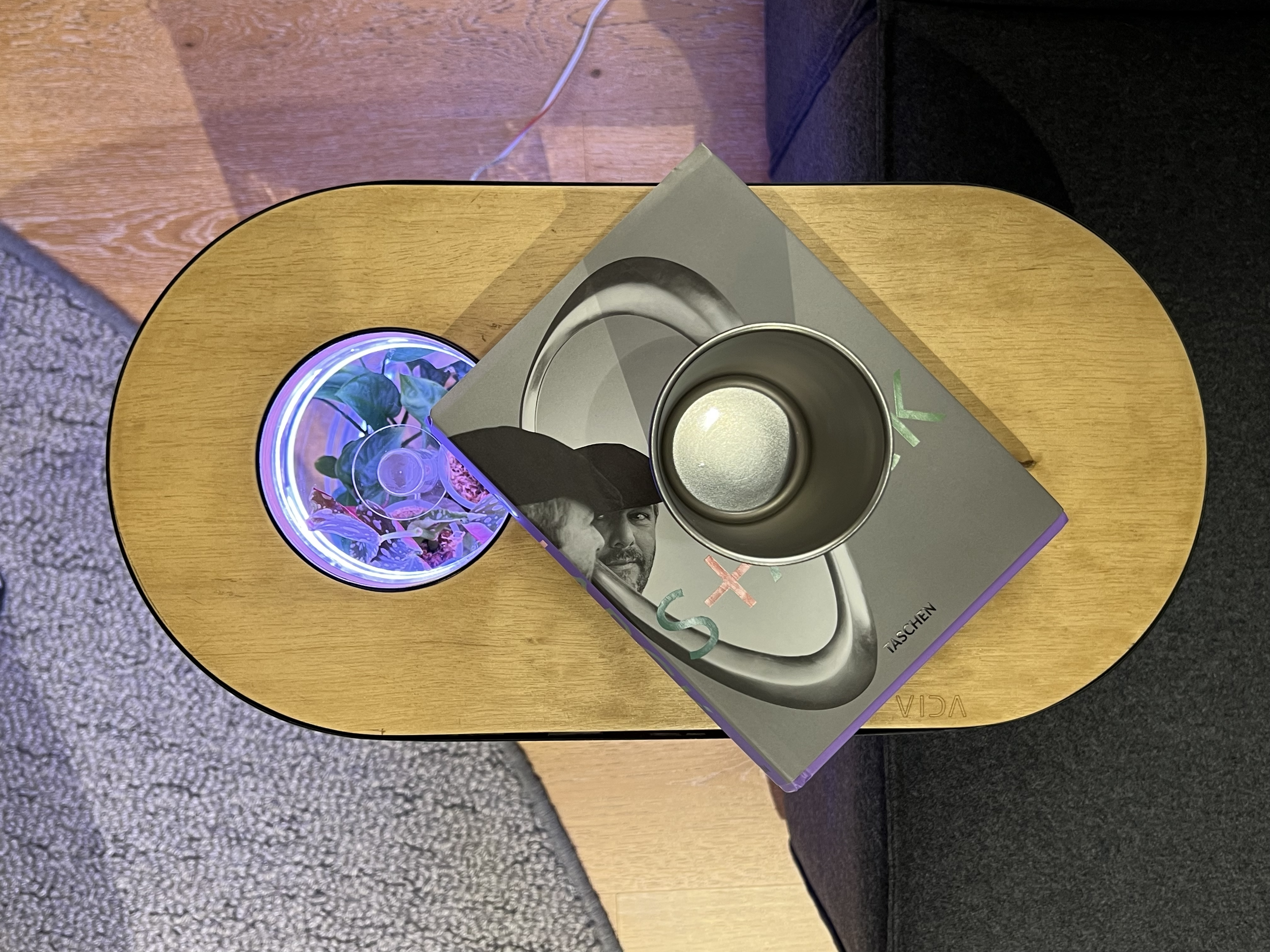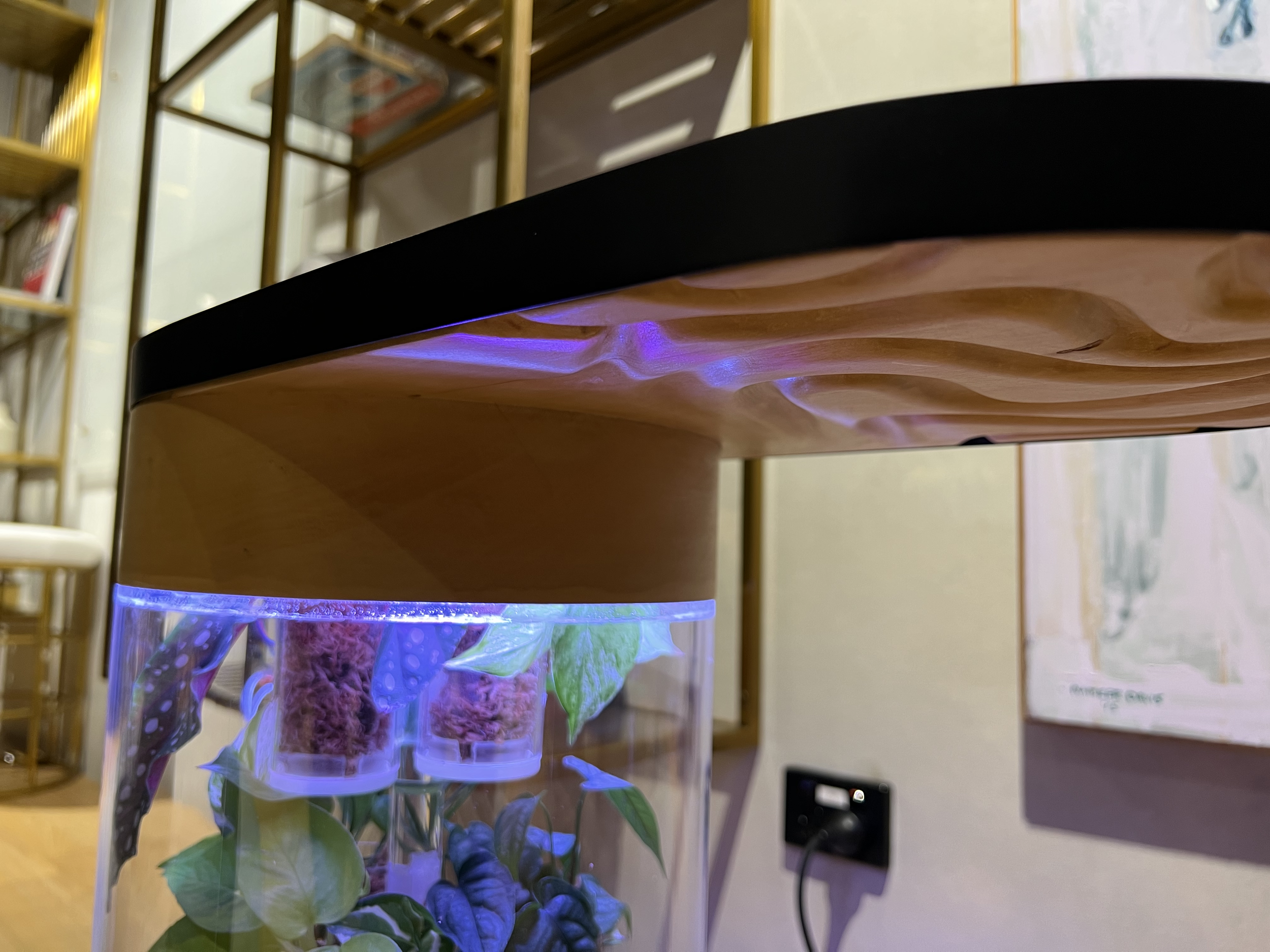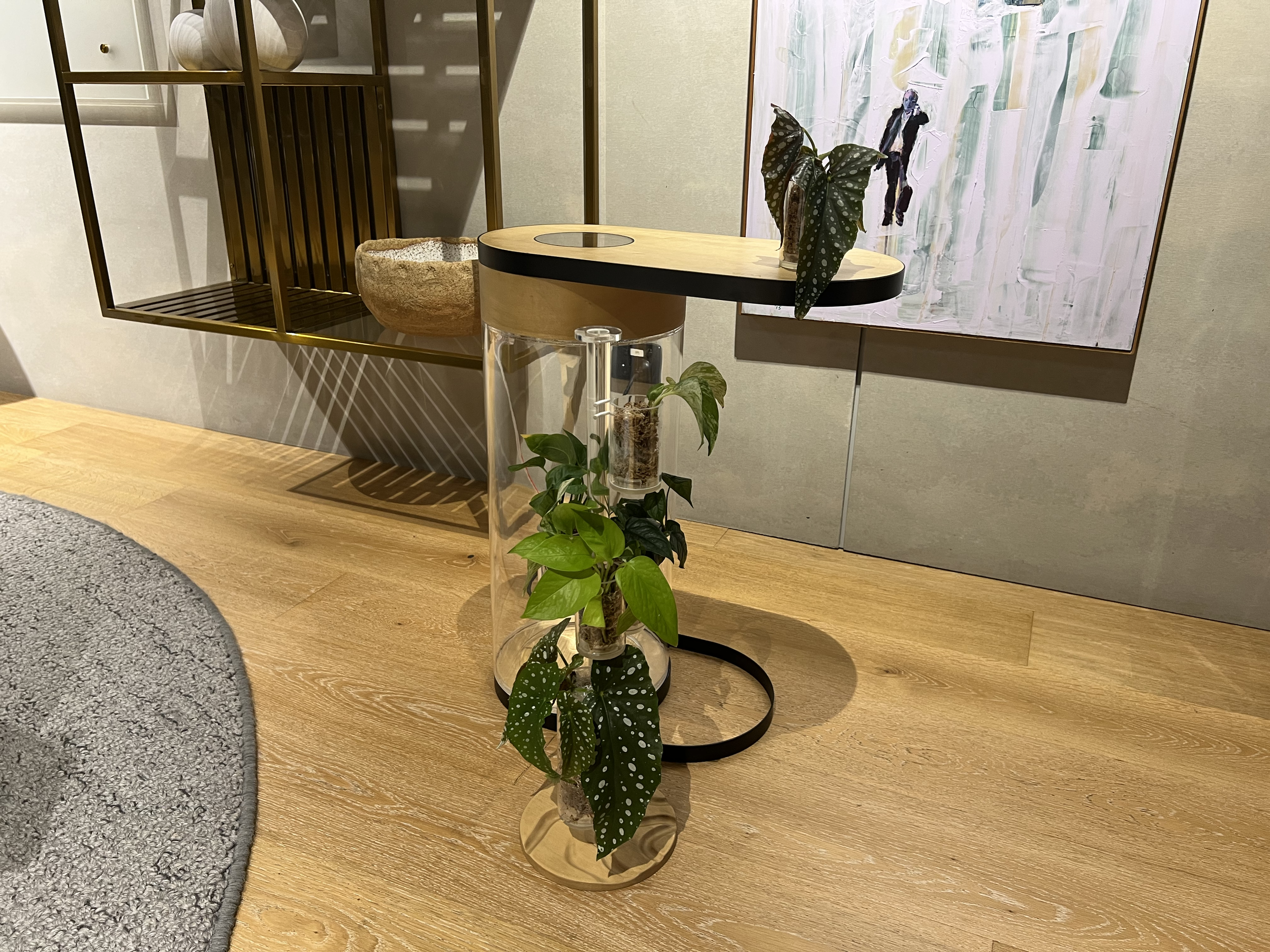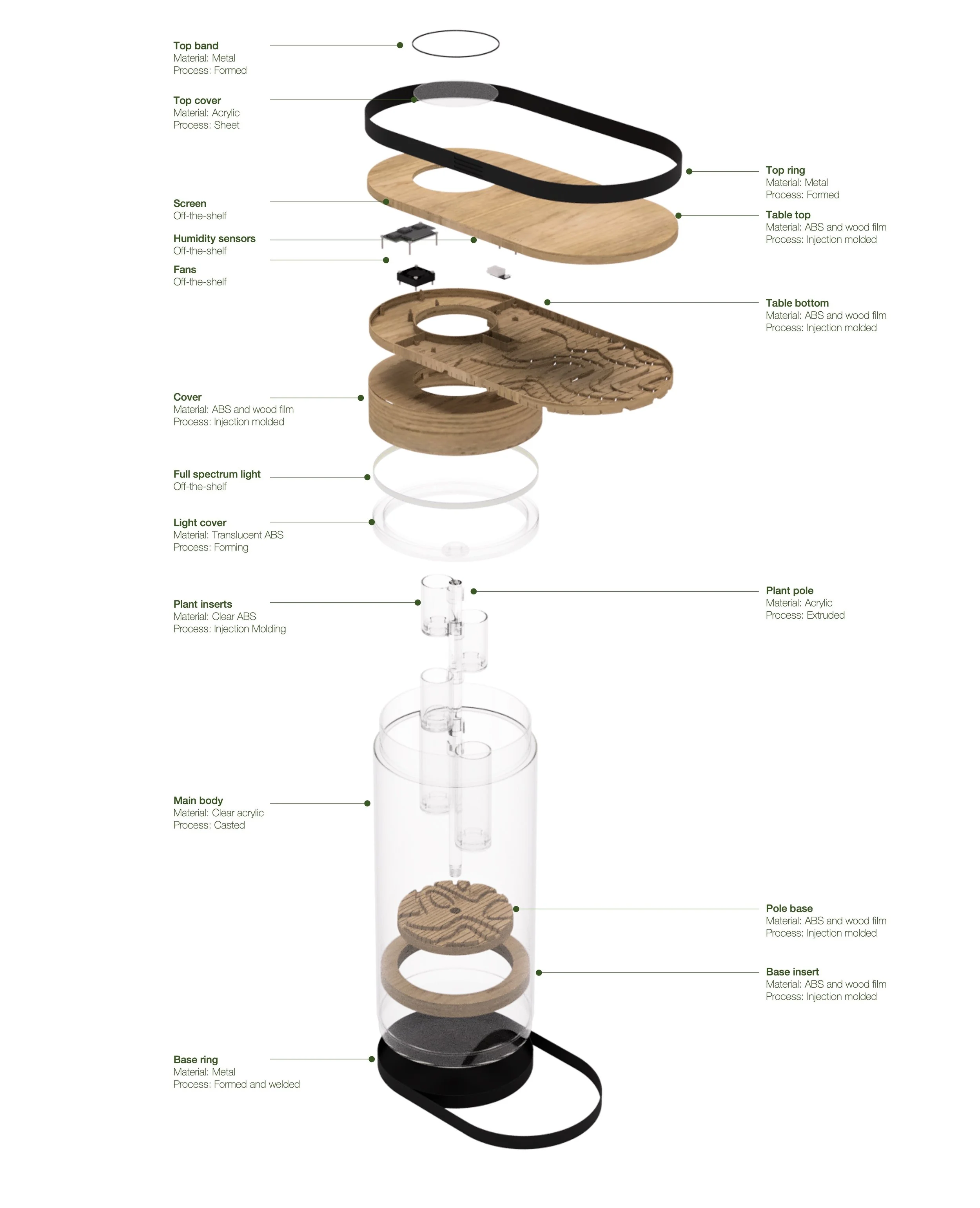VIDA
Winner of the Street & Garden Award 2021 and the People’s choice Award 2021
BRIEF
Undertake high level of research on indoor gardening activities and the effects on human health. Identify areas of opportunities or problems and develop a detailed design solution that addresses or improves these.
DESIGN SOLUTION
VIDA is a biophilic design part side table, part plant propagation device for home environments. VIDA increases plant propagation success rate by providing what the plant needs (light, humidity and air flow) through a controlled environment. VIDA is also designed to connect people with nature and provide the associated health benefits that comes with ongoing interaction with plants and nature.
TOOLS & SOFTWARE
Autodesk Fusion 360
Autodesk Sketchbook
Adobe Photoshop
Analogue Sketches
Blender
SurveyMonkey
PowerPoint
FABRICATION TECHNIQUES
Wood grinding and sanding
Metal cutting and welding
Basic electronics
Lacquering
Laser engraving
3D printing

BACKGROUND
The purpose of this project was to understand the health implications of indoor gardening on people’s lives and to identify problem areas and opportunities for design intervention. Covid-19 had a significantly negative impact on people’s lives, especially during lockdowns. Gardening is known to positively impact peoples mental health, which was reflected in the dramatic increase in horticultural activities in home contexts during restrictions.
RESEARCH
A detailed literature review was conducted across three areas – biophilic design, human health and indoor gardening. Two loops of action research were deployed, utilising categorical and long answers surveys . End users and agricultural experts were engaged. Loop 1 involved 20 participants and for loop 2, 11 participants were engaged.
PROBLEMS & OPPORTUNITIES
Research findings highlighted that people who actively engage with plants in home environments experience positive psychological benefits. The main problems identified in the research include; (i) limited space in the home context and (ii) factors that impact propagation (light, humidity and air flow).
CRITERIA
Three key criteria were refined as the foundation of the final design:
Propagation: Managing the complex factors that impact propagation success including light, humidity and air flow.
Space: Restricted space demands in domestic settings.
Greenery display: providing plants and greenery visibility to support mental health benefits through visual connection with nature.
DESIGN SOLUTION
VIDA

“Helps with keeping busy with indoor activities and also the dopamine fix whenever a new leaf emerges”
Participant quote
HOW VIDA WORKS
USER EXPERIENCE
VIDA was designed to make propagation, an enjoyable and easy gardening experience. The device can be conveniently operated through the app whilst the user is away . Plants and root development can be easily monitored with a see-through design. The inserts and pole can be placed on the floor during the propagation activity. The device can be easily cleaned as the inserts and pole can be taken out of the main body. The automated system reduces user input and increases peace of mind.
AESTHETICS
The main driver for the design aesthetics was to make the greenery the visual focus. For this reason, the largest part of the design is completely see-through. Organic forms, natural textures and colours are incorporated throughout to create a natural feel. Air flow influenced the organic patterns. The table top also includes a see-through section to enjoy the greenery. Black metal was used to accentuate organic forms and communicate a sense of value.



MANUFACTURING PROCESSES
VIDA was designed for cost effective manufacture. Parts are manufactured through extrusion, injection moulding, metal forming and welding. The product was also designed for assembly through minimum number of parts, self fastening mechanisms and self aligned parts.
MATERIALS
A combination of wood film and ABS was used on the top part of the design and on the base of the pole. Clear acrylic was selected for aesthetics and cost. Clear ABS was utilised in the design for manufacturing, performance and aesthetics reasons. A black steel band for performance and aesthetics..
FINAL PROTOTYPE








DESIGN PROCESS OVERVIEW
Action research (quantitative and qualitative)
Data analysis (graphs and thematic analysis)
Synthesis
Market Research
Design Ideation
Concept Iteration
Concept Development
Prototyping and Testing
Concept Refinement
Final design,
High Fidelity Prototype
Presentation Boards























